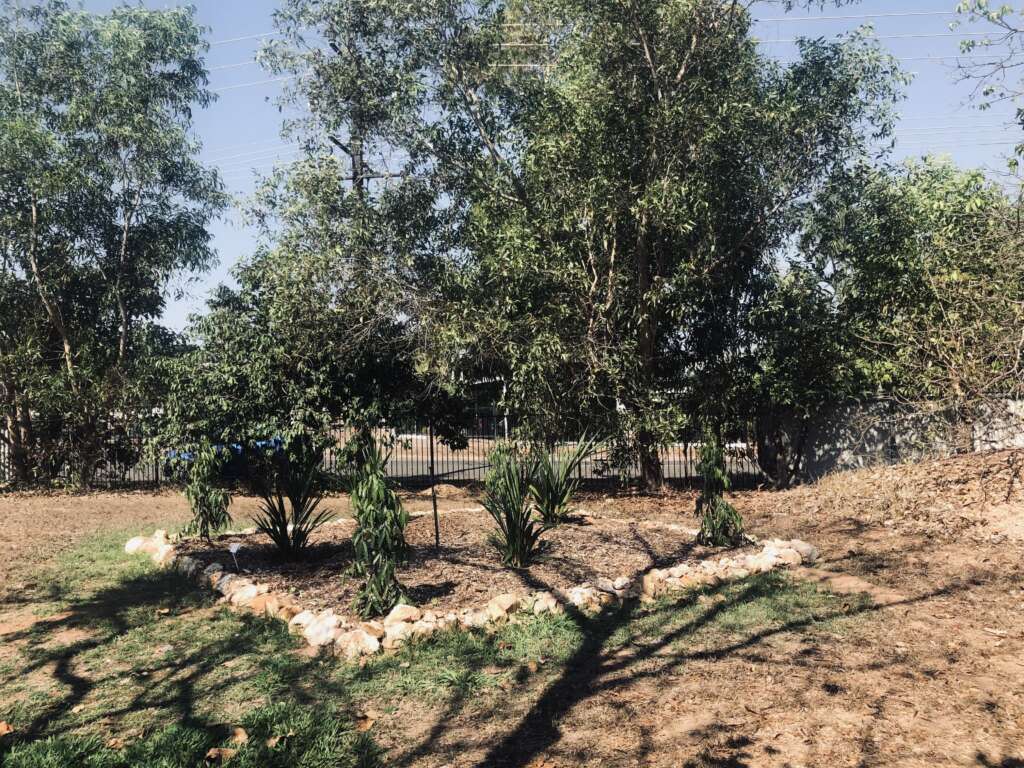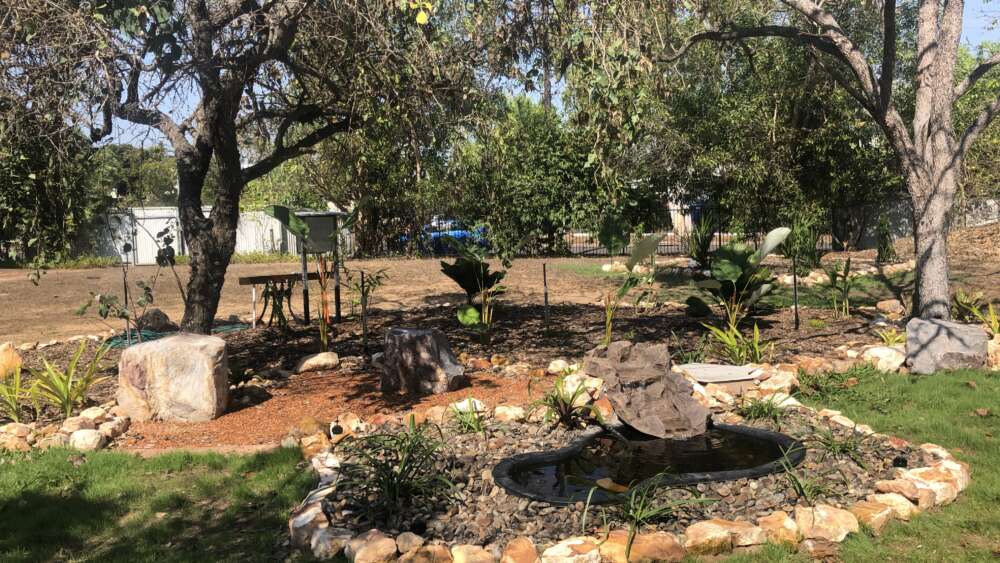The expansive grounds of Nungalinya College’s beach-side campus in Darwin are dotted with shade trees that rustle soothingly in the wind.
Even non-Christians who visit comment on what a lovely place it is. For Christians, the sense of serenity on the site of this Indigenous theological college is even more enveloping.
Now, the college is making the most of its beautiful land by building a series of biblical garden spaces to represent different parts of the scriptural story.
“We already have a sort of walk around the college and geographically positioned things to help people understand where things sit, east and west, places they use the most, the Promised Land versus Egypt, where it all fits. But we thought we really could do better than that!” says Nungalinya College principal Ben van Gelderen.
“Potentially, you will have some outdoor education spaces, so when you’re taking some lessons about Jesus’ miracles, wouldn’t be great to be in the area that is actually set up to be the Lake of Galilee?”
The first of the Bible gardens to be created was, naturally enough, the Garden of Eden, with lots of fruit trees including one representing the tree of life and one the tree of the knowledge of good and evil.

Ben van Gelderen
“As we approach, you can see these bushes will grow into a hedge and when you look at it straight it will look like a barrier, so it’s almost like you’re being locked out of Eden,” says Ben as he shows me around.
“The path is a big A for alpha and an O for omega,” he adds, explaining that the Nungalinya logo is the letter Omega. It represents Darriba Nungalinya (Old Man Rock), a long flat rock visible from Casuarina beach at low tide, which is also a symbol of the empty tomb.
A tree of life will be in the middle of the A and a tree of knowledge of good and evil will be in the middle of the O.
“So among the paw-paws and the other luscious fruiting trees is the bush apple. We thought we’d flip the script on the apple always being the bad thing. Apple is one of the bigger native bush tucker, so it will grow to be the tree of life.
“And the tree of the knowledge of good and evil which you’re not to eat is going to be the cycad, which has a nut which is poisonous. A lot of the communities up here have worked out how to leach the poison out and they do eat the cycad nut, but if you eat it straight you do die. It’s really very poisonous … Don’t take that one.”
The newest garden to be developed is Babylon, a space where you can sit under the mango trees in the afternoon.
“It’s not fully grown yet but it will grow in a few years. The idea is to have a bit of running water to symbolise the crying by the waters of Babylon idea. These trees are the ones you see around Darwin that look like a willow, but it’s actually a tea tree, which will eventually look a bit like that hanging garden idea.
“Also, the casuarina tree is almost like a pine tree, almost like a white Christmas kind of tree but in Arnhem Land, certainly when the wind goes through those trees, that’s part of a women’s crying reminders, so they said if you’re going to have a sorrow place then some casuarina trees would be good.”
“In any given four-week block of studies, someone will hear of someone passing every time.” – Ben van Gelderen
Offering a way to tell the exile story and the grief at not being in one’s own land, the Babylon Garden may develop into a space where Indigenous students come to start their mourning when they hear of deaths in communities.
“I mean, that’d be up to the people themselves, but that’s the hope, that a place in the college might evolve into a space where that happens. And we get that sort of news quite regularly because we have so many people from so many different places that in any given four-week block of studies, someone will hear of someone passing every time.
“Sometimes that’s a really significant person for a lot of people. And sometimes it’s just a smaller family network, but it’s almost inevitable that you’d get that sad news in a month.”

Tower of Babel … in its infancy
To the side of Babylon is a rectangle of mast trees, which will grow straight up to 12 metres, to look like a Tower of Babel. “That will take a few more years,” says Ben.
The next ambitious step will be creating a Jerusalem, crucifixion and resurrection scene, possibly tied into the college’s Art and Faith course.
“The art courses are already tied in because they did art around the creation and the idea was to have some permanent art featured in the Bible Gardens. Next year maybe they will focus on the Easter story and we might have a Scriptural stations-of-the-cross walk near the main gate.
“That’s a bit further down the track, but that’s next on the map.”
Ben agrees with me that there is a serene vibe on the campus but with an underlying sadness.
“I feel there is definitely a peace here. I think it’s God’s place. But the other factor is they did set it up well. The older history of Nungalinya, how the churches approached the Larrakeyah elders at the time, was that they took their time. They started talking about this in the 60s and it wasn’t until 73, it was here. So they didn’t rush things. And I think that’s part of the reason the place has a good feel.
“There’s still sadness comes up regularly, and the other big thing is that people coming from different languages, culture, regions, but having that shared faith, there’s something special about that everywhere in the world where that happens. I’m very different to you but I call you brother or sister and it’s very clear here because there are different languages but there’s real strong sense of unity.”
Email This Story
Why not send this to a friend?


